Best microphones for streaming and gaming in 2025
Good sound quality is a must-have in content creation - here are the best microphones for streaming


I hate to say it, but one of the best microphones for streaming and gaming could be the difference maker between someone stopping on your content for 30 seconds or so, and you gaining a dedicated audience member. Sound quality is a massive deal, is the first thing people usually notice about your content, and is one of the key ways to get your personality across. Even if you're not trying to become the next YouTube or Twitch sensation, a decent microphone is still a worthy investment if you spend a lot of time in Discord hangouts with friends. Believe me, they'll appreciate your microphone as much as you will.
When it comes to the best microphones for streaming and gaming, you have a choice to make. The first option is using a USB microphone, which will make things nice and easy since you can literally plug it in and use it. Alternatively, you can go for an XLR mic. Generally, these tend to be more expensive, plus, they require a dedicated audio interface. Affording the best gear for streaming is bad enough these days, but opting for a cheaper USB-C mic isn't the hamstring it used to be. Technology has come a long way, and there are plenty of amazing USB options out there that would fool even the most obnoxious audiophiles today.
The other thing to consider, especially if you want the absolute most from your microphone, is getting the right one for your voice. If you have a rich, low voice, you want something that will support that, while also offering something that will boost any treble sounds so things remain balanced. On the other hand, if you haven't been blessed with the low dulcet tones of James Earl Jones, there are mics out there that will pick up and boost bass for you.
The Quick List

The recent update to possibly the most iconic content creation mic somehow improves it further. If you're willing to spare no expense, look no further.

The SteelSeries Alias and Alias Pro are simple, no-fuss solutions if you want a conclusive microphone package from just one purchase. This could be all you need.

If you're on a strict budget for content creation goodies but you don't want to compromise on audio quality, this is still the best affordable microphone money can buy.

There are so many great USB-C microphones out there and they're all priced so similarly, but Shure's MV6 microphone has to be my favorite option.

Shure's MV7+ is king of the hill when it comes to versatility thanks to its dual USB-C and XLR connectivity. On top of that, you get Shure's prestigious audio quality.

The Logitech Blue Sona is one of the best XLR mics money can buy. It also offers you a bit more personality than Shure's muted black options.
Show more ↓

RODE is easily one of the best brands on the planet when it comes to audio quality, and the PodMic USB is perhaps the most overlooked and underrated option on this list.

If you're already integrated into the Elgato content creation ecosystem, the Elgato Wave 3 will give you the simplest tool to add to your setup.

If you know it's an XLR mic you want, the RODE X XDM-100 is packed full of value. Be warned, it's a pretty long piece of kit, but you get great audio quality out of it.

I've been a content creator for almost a decade now, and that's meant a lot of shopping for mics, a lot of using them, and working out the differences between different types. I've tested loads in the last ten years, including USB options and more premium XLR ones. I'm not exaggerating when I say that I think a good mic is one of the keys to you growing and maintaining an audience, and I want to help you find the right one for you.
The best microphone for streaming and gaming overall



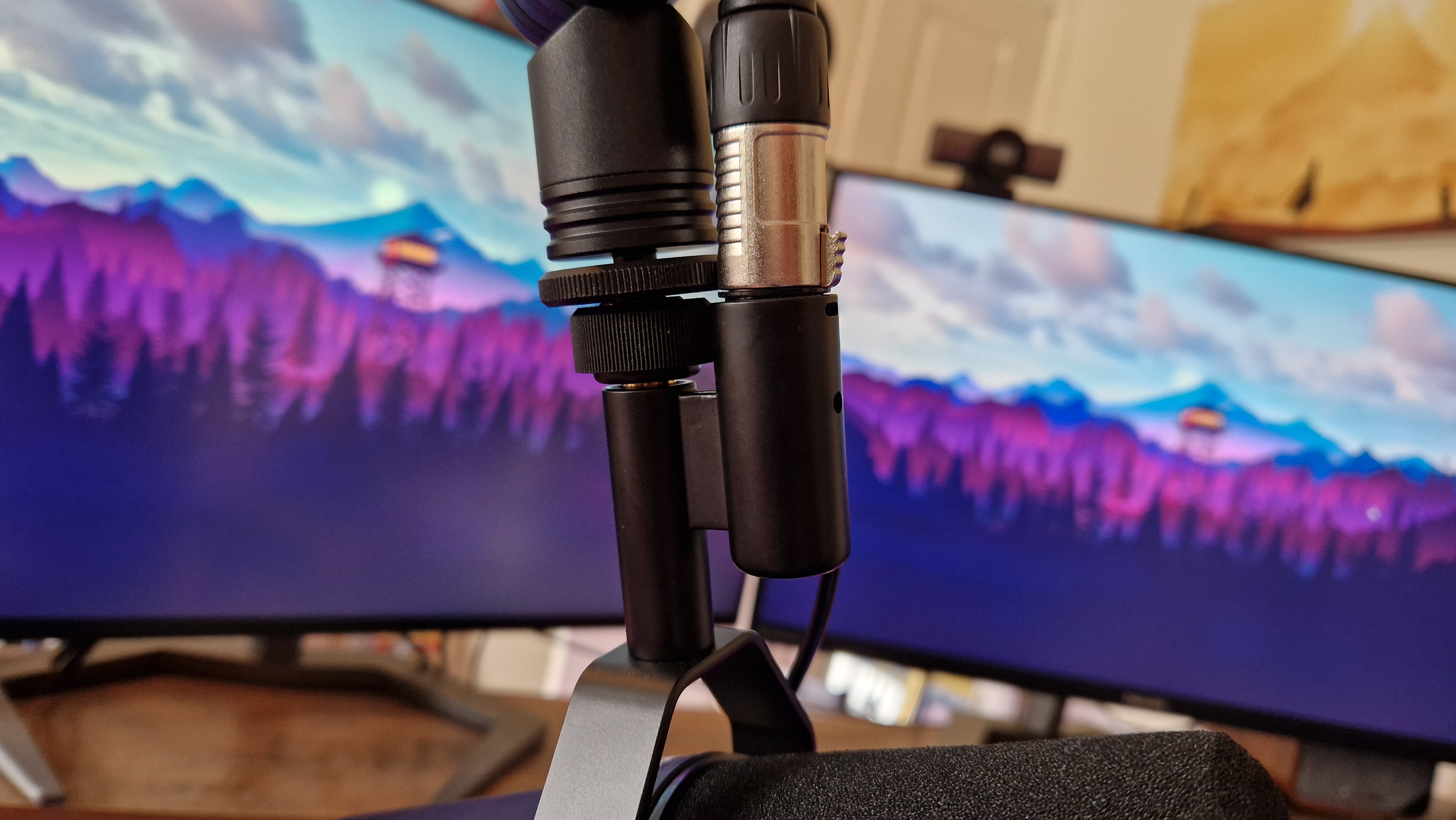
Specifications
Reasons to buy
Reasons to avoid
The Shure SM7dB is the first major update to the world's most immediately recognizable content creation mic. The SM7dB takes the incredible quality of the SM7B and adds an internal pre-amp that will boost your signal up to +28db. Granted, this mic might be overkill for the majority of streamers or gamers who are just looking for a simple way to communicate with friends, but there's no denying its supreme quality for professionals.
You may notice a bit more branding on the updated Shure mic than we're used to. There's a glossy Shure logo as well as some more visible tape around the new version, but we still enjoy how muted and classy this mic looks on stream. You should note that this is a bit longer than the regular SM7B as well, and although it's not that much different, it might serve to mount this mic to some sort of boom arm to ensure it doesn't block the bottom half of your monitor. Regardless of the small differences, the SM7dB sports the same iconic design of the mic you see in the majority of professional setups these days.
The pre-amp on board here really does polish up the one thing owners of the SM7B had to complain about. There's a feeling with this mic that you have to crank up the gain to uncontrollable levels to get the best quality out of it. With an internal pre-amp, you take out the need for a middle device, and depending on your use-case and voice quality, match its settings to suit you.
In testing, we did find that the cardioid pattern was fairly strict and that the best results truly came from being around 6 inches away from the mic, or up close and personal for that ASMR quality. You will need to mind your mic etiquette more than you would with others, especially if you're used to a USB-C option. Nonetheless, the quality this mic is able to pick up is out of this world. There's a reason it's one of the most popular picks for professionals.
The best all-in-one microphones for gaming






Specifications
Reasons to buy
Reasons to avoid
Whether you opt for the cheaper USB SteelSeries Alias or the pricier XLR Alias Pro, you're grabbing one of the very best microphones for streaming and gaming currently on the market. These dropped late in 2023, and were immediately met with universal praise for their convenient all-in-one package, and because they quite simply do the basics so well.
First and foremost, these are both brilliant microphones. They capture sound at a studio level, but they also look like no other microphone on this list. Inside both the Alias and Alias Pro is a cardioid capsule which manages to get that rich podcast quality up close, but doesn't fail to maintain that quality when you're a little further away from it.
That's honestly just the tip of the SteelSeries iceberg though, because the Sonar software you get with your purchase takes things to a whole new level. Whether it's noise cancelling or managing multiple audio profiles running through your PC, this software is as conclusive as you'll find. Lump in the fact that you get a small mixer/interface with the Pro model, and you have a true all-in-one package with these brilliant microphones.
The best budget microphone




3. Blue Yeti Nano
Specifications
Reasons to buy
Reasons to avoid
Editor's Note: The Yeti GX
Greetings, microphone hunters! The Yeti Nano is still our go-to budget pick, but we appreciate that not everyone will be keen to buy a micro-USB mic that's over two years old. However, I believe the Yeti Nano is still a better all-round package, particularly because the new GX lacks a headphone jack for live monitoring, which is a basic must-have for any microphone in this day and age. Still, the GX will give you great audio quality and an updated USB-C design. If you'd prefer the updated version, you can grab it at the link below.
Read more: Logitech Yeti GX review
Blue, which has now been absorbed into the larger Logitech G brand, is very well known when it comes to streaming mics, and for a good reason - they're masters of the craft when it comes to bang for buck. The budget Yeti Nano (the scrappy younger sibling of the Yeti range) is very impressive. It packs the accessible price tag of the entry-level Snowballs mics into a really professional package that sounds as good as any USB mic you'll find at this price range.
Hitting hard with great audio and a dual condenser setup, it perfects the Yeti formula while reducing that microphone's cost. It's a whole lot smaller and lighter, too; the Nano is half the weight of the original Yeti, making it much more portable than its counterpart. The ease of setting it up certainly helps. Thanks to a plug-and-play USB connection, you can be recording in no time.
This is an amazing option for those who want to take advantage of Blue Yeti quality without forking out the cost of a full-sized one. Moreover, the newest Logitech G Yeti GX now exists, but for us, the best value still lies with the Nano. When that changes, we'll let you know.
The best USB mic for streaming and gaming
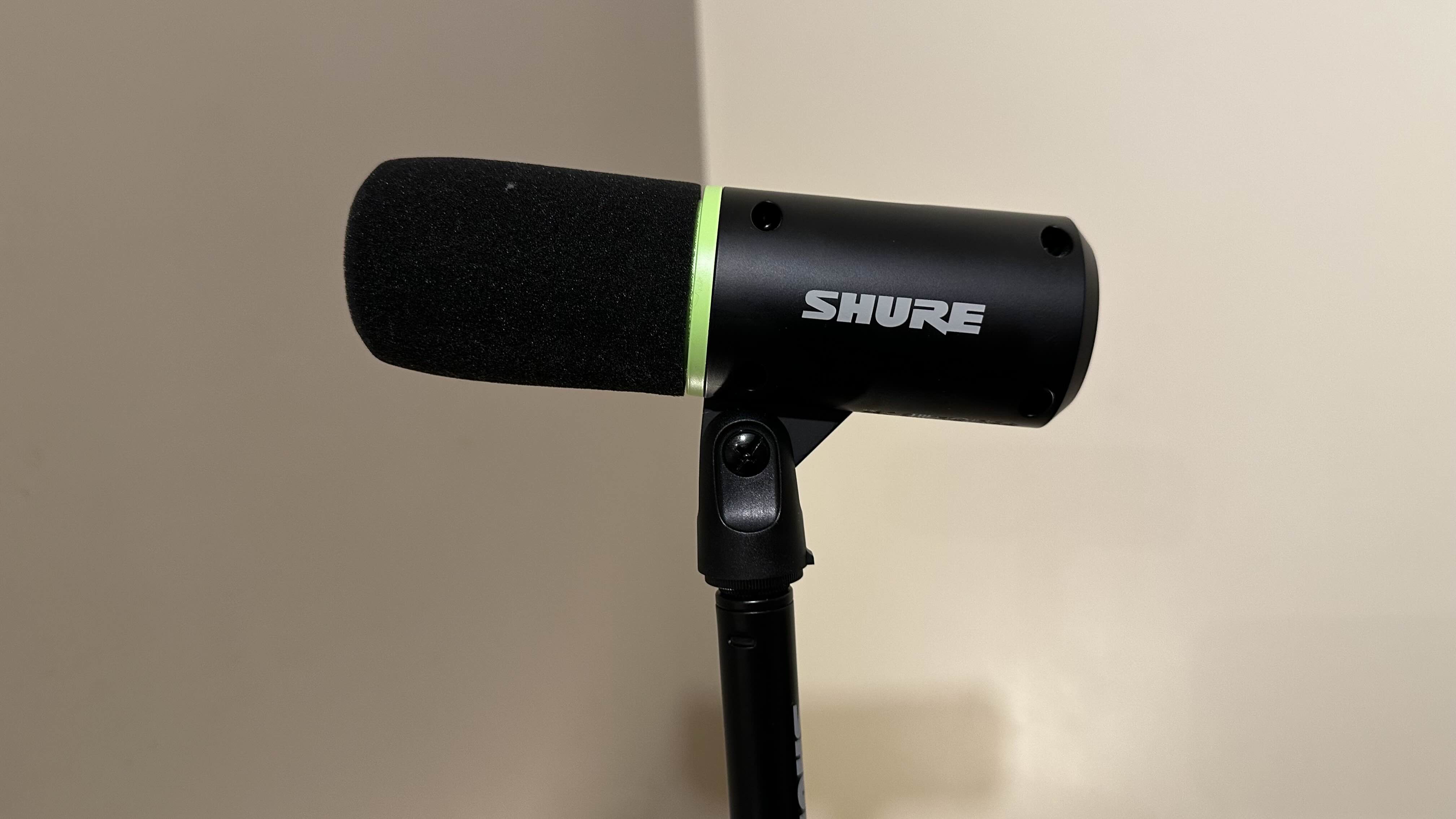




Specifications
Reasons to buy
Reasons to avoid
The $130 price point in the USB microphone world is one of the most competitive there is. This tends to be a sweet spot where you don't over spend on a professional option, but get the production quality that gives your content the kind of sound that makes people take it seriously. The Shure MV6 is our new favorite USB mic to recommend because it takes a lot of the great things about the brand's high-end mics and brings it down to an affordable level.
In its look, you can see quite a resemblance to the SM7dB. It's clear that Shure has identified the number of gamers that aspire to the lofty heights of YouTube and Twitch stardom, but can't afford the mics they see their favorite content creators use. The solution? Hold onto that iconic design and price it at a point that's attainable.
This is a dynamic microphone, which means it isn't as generous as a lot of the other condenser options in this price range. But if you mind your mic etiquette and stay close to the dynamic capsule within, you'll be rewarded with pristine sound quality. There's a stand windguard in the box with the MV6, as well as a disappointingly short USB cable. In the brand's MotivMix app, you'll get access to the real value for money, including a digital popper stopper and de-noiser which gives SteelSeries a run for its money.
The MV6 can capture professional-sounding recordings with or without these things, and for a USB microphone, it really is tough to find a better all-rounder. The 3.5mm audio jack will prove useful for live monitoring and hearing PC game audio all through one channel, and there's no need to invest in an additional pop filter either.
The most versatile mic for streaming and gaming





Specifications
Reasons to buy
Reasons to avoid
We deem the Shure MV7+ the most versatile microphone for streamers and gamers today because of its dual connectivity. Often in this microphone market these days, you find a battle between the USB-C contenders and professional XLR options. The Shure MV7+ gives you both, simultaneously.
Granted, this updated model of the Shure MV7 won't come cheap - Shure is one of the premium names in this space, so this will likely suit professionals more than it will a beginner. Still, if you're looking for something that will give you XLR quality in a USB-C package, the MV7+ is the guy who can do both. It isn't the first microphone to focus on this dual-connection package - the Rode PodMic USB is very similar, but the fact this one lets you use both outputs at the same time puts it a cut above. Not to mention, this is a Shure product that gives you iconic audio quality.
The design is a less muted black capsule than you'll find on the brand's SM7B - it has more branding and a nice RGB strip around its mid-section to help you control it, and to communicate with you. That RGB also doubles as a capacitive mute button. On its bottom, you'll find a USB-C output, XLR output, and a 3.5mm headphone jack for live monitoring - something we wish the more expensive XLR rivals on this list would include too. Inside, you'll get a unidirectional cardioid capsule.
We found this mic performed exactly as you'd expect a Shure product to. Using it with the Shure MOTIV Mix app really brought out the best in it, but considering you essentially get SM7B quality for significantly cheaper, there's value to be had here. Admittedly, we did find that there was better performance to be had at close proximity for this microphone, which makes sense since Shure has designed it for podcasters first and foremost. It also doesn't have quite the same Yoke mount as the SM7dB and suffers some bumps and knocks as a result.
Still, if you're willing to invest in audio quality, and you go between XLR and USB-C use, or need to use both simultaneously, then you won't find a more versatile option than this.
The best Shure alternative



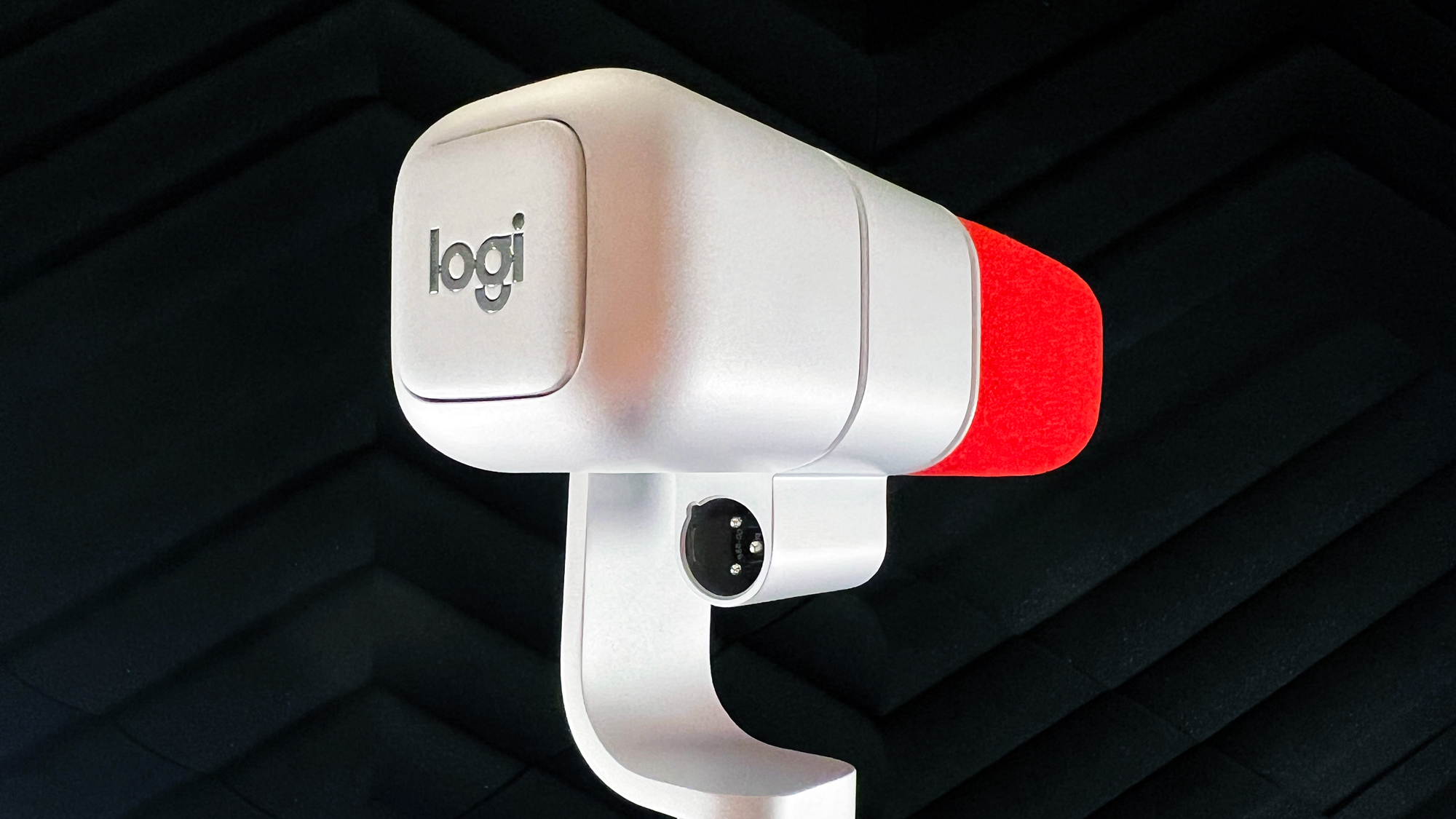
Specifications
Reasons to buy
Reasons to avoid
Logitech has hit the ground running with its debut broadcast microphone. The Blue Sona leans on the years of expertise of leading audio brand Blue to deliver a premium XLR microphone perfectly suited to streamers and content creators.
At $349/£299 the Logitech Blue Sona is at the top end of home microphone options but we found it delivered audio quality in line with its price point. The supercardioid polar pattern, combined with a few clever bits of tech under the hood offered bright, clean vocals without unwanted room noise creeping in. Despite being a dynamic microphone the Blue Sona produced a nicely balanced tone without sounding overly close or stylized. On-board EQ toggles are a nice touch and will be beneficial to some voices, but we found them a little overbearing so kept them switched off.
The Blue Sona’s high-end metal body is designed with flexibility in mind. The integrated mounting bracket is reversible and we found it easy to integrate it into our existing studio setup. You’re treated to two windscreens in the box, either neutral black or striking red and they can be swapped on the fly thanks to a nifty magnetic joiner. We tested the white variant of the Blue Sona and found the red windsock gave the mic a little more personality.
Yes, the Logitech Blue Sona is one of the most expensive microphones for streaming that we’ve tested but it’s also one of the best and you won’t be disappointed in your investment if you take the plunge.
The best RODE mic for streaming and gaming






Specifications
Reasons to buy
Reasons to avoid
This is hands-down the biggest rival to Shure's MV7+, and might be one of the most underrated mics on the market right now. If you're sick of hearing the debate between USB and XLR mics, the RODE PodMic USB might just be the pacifier you need. As RODE mics go, this is accessible and versatile, so it has to be on this list for the folks that have always looked at RODE audio products as the golden goose that's just that bit too expensive to ever afford.
The PodMic USB sounds just as good as you'd expect a RODE product to. There are crisp, full profiles to be had across a range of situations. Being a dynamic microphone, it benefits from a focused, directional pickup while ignoring unwanted noises from within the room. Vocals were unsurprisingly strong with a great level of presence and without wandering into over-the-top late-night radio territory.
The included windsock sleeve confidently rejected plosives without adding any noticeable muffle but despite an internal shock mount I did find the PodMic USB susceptible to desk bumps and knocks to the mic arm. Overall, if you need something with USB-C connectivity but you want to futureproof yourself for an XLR setup later, this is a superb option.
The best mic for Elgato fans
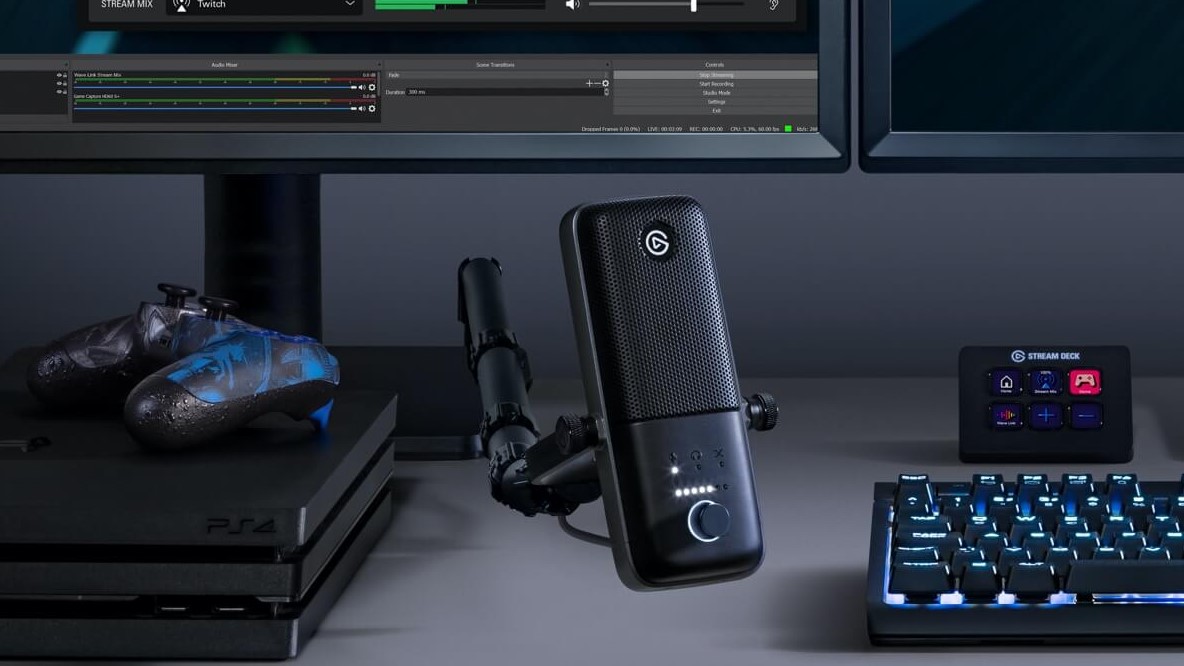




Specifications
Reasons to buy
Reasons to avoid
If you're already integrated into the Elgato ecosystem with any of the brand's other premium content-creation gadgets, its USB-C mic might be the best audio solution for you. Thanks to some helpful software updates to the Wave Link software, this mic keeps getting quality-of-life updates as well, some of which might be all you need to take your sound quality to the next level.
This is an ideal mic if you want your streams to sound great with little to no tweaking on your part at the same time. Elgato’s utilitarian-looking Wave:3 is good enough to use out of the box and has handy control dials and mute functions built into its chassis. Now significantly cheaper than it was at launch, it’s no longer going toe-to-toe with Blue’s imperious Yeti X in price but offers something comparable in features and sound quality.
A lot of its best attributes are hidden away, like Clipguard, an anti-peaking hard limiter built into the mic without the need to install any software. It works intelligently, squishing your signal just enough for it to feel smooth and subtly processed for your audiences. This is a streamer mic, after all, not something designed to capture the dynamic range of a live orchestra.
The Elgato Wave 3 is a workhorse model for any streamer
Elgato Wave 3 review
You genuinely don’t need a pop shield with this one either, thanks to a built-in design that catches hard plosives before they explode anyone’s eardrums. Again, it works well and sounds great in conjunction with Clipguard.
The overall sound is crisp and detailed, not quite as warm as the very best we’ve tested but only by fractions. It will get you compliments on Discord and its easy operation will keep your Twitch sessions ticking over without tech issues - all except for an awkwardly placed touchscreen mute control, which is a bit too easy to accidentally tap.
The best value XLR mic




Specifications
Reasons to buy
Reasons to avoid
The RODE X XDM-100 is a debut product from RODE’s new ‘Streaming and Gaming Division’. A USB-C dynamic microphone offering studio-quality vocals in a unit with all of RODE’s usual build quality.
With a souped-up design based heavily on the popular RODE Procaster, the XDM-100 is a step away from RODE’s usual studio aesthetic but it’s not over the top and the red accents really pop off an otherwise all-black body, a nice fit for most streaming setups. It’s a big beast however, more than 21cm long and 11cm wide when sat in the shock mount, making it one of the largest microphones we’ve tested. This XL size brings XL weight too so make you have a mic arm up to the task.
The audio performance is unsurprisingly impressive. In our testing, we found it to deliver excellently rich, warm vocals in particular. The RODE XDM-100 offers that close, rounded podcast sound synonymous with dynamic microphones and sounds great even without any extra post-processing. The USB-C connection saves the effort and cost of an external audio interface and once plugged in we couldn’t have told the difference between the XDM-100 and XLR microphones we’ve tested.
At $249/£269 the RODE X XDM-100 is certainly at the top end of the price range for a USB microphone but it’s also right at the top in terms of performance too and would make a strong addition to any creator’s setup.
Best microphones for streaming - FAQs
What type of mic is best for streaming?
You have two choices when it comes to the best microphones for streaming - USB and XLR. The former is usually cheaper and easier to use with its plug and play functionality, however, the latter, offers greater overall sound quality closer to true studio sound. Every microphone in our roundup sounds the part, but if you want the best for streaming then you can find high quality USB and XLR models around the $100 mark that won't disappoint.
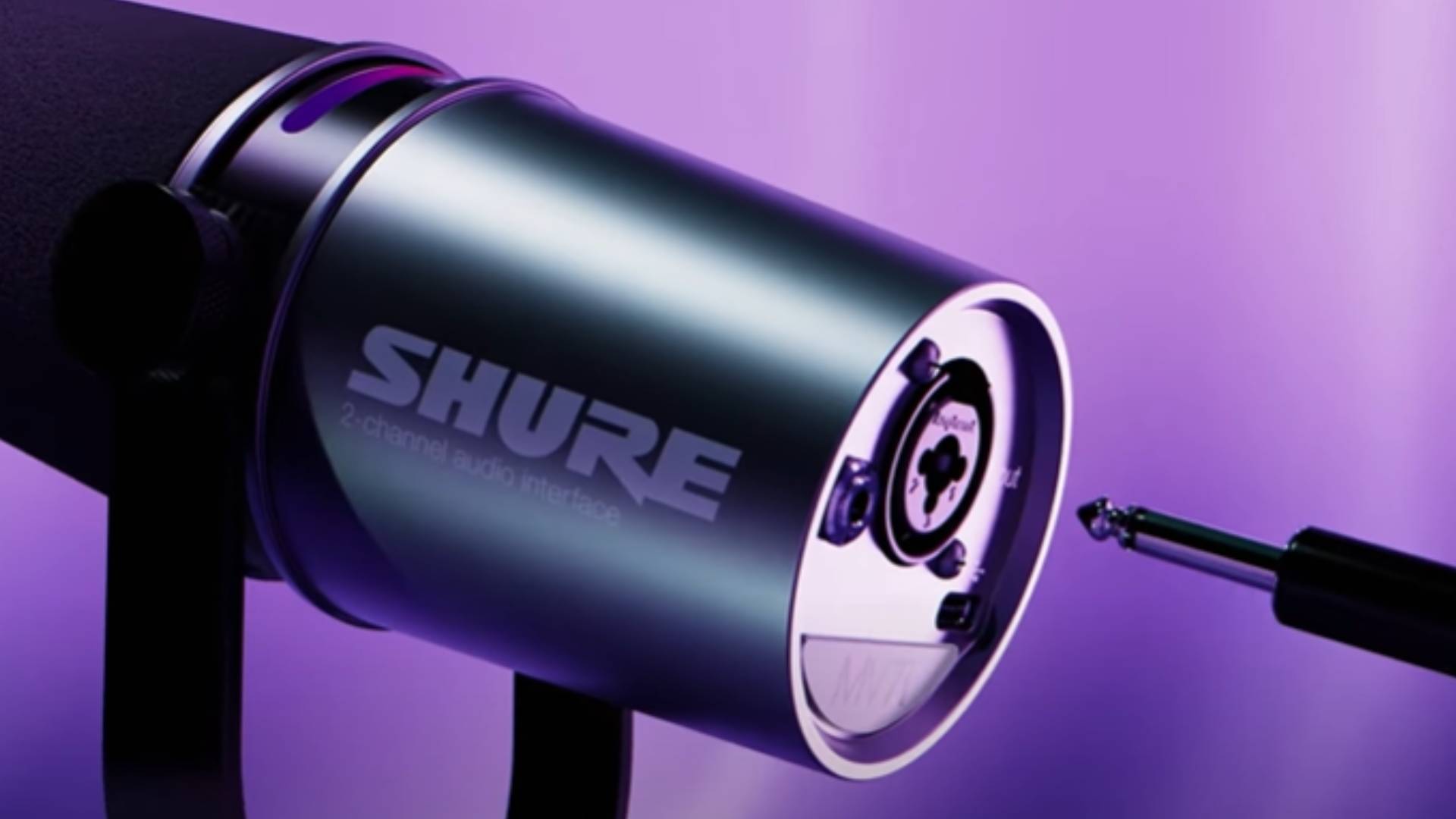
What mic do most YouTubers use?
Different content creators will use varying mics, and although there are more popular options you'll see regularly, it's hard to nail down one that's the absolute best mic for streaming and YouTube. A popular choice is something like the Blue Yeti, since it comes in a few different models and doesn't break the bank. Another you'll see that is used by a lot of popular podcasters is the Shure MV7, or the Shure SM7B. For the most part, however, we'd recommend cheaper options that offer strong performance - especially if you're just starting out.
Do I need a microphone for streaming?
Gaming headset mics and built-in mics on webcams are okay for talking to your friends, but if you're addressing an audience (or trying to build one) then a dedicated microphone is essential. It won't matter how good your gameplay is or how captivating you are on screen. If you're not being heard clearly, or your sound quality is poor, people won't have much patience to stick around and watch you.
What is the best budget streaming microphone?
Why you can trust GamesRadar+
In our eyes (or ears), the Blue Yeti Nano is the best microphone for streaming if you're on a tight budget. It can usually be found under $100 / £100, and it offers amazing sound quality for that price. It's no slouch in terms of features either, since it has zero latency monitoring, mute functionality, and can switch between omni-directional and cardioid modes. One of the underrated qualities of this mic is that it has great bass response, too. Essentially, the Blue Yeti Nano gets you a lot of the quality and features of the more expensive Yeti X, without breaking through your budget in the slightest.

Why do streamers need an audio interface?
Some streamers use an XLR microphone for better sound quality which needs its own 48V Phantom Power source to work. However, an audio interface is a versatile piece of kit that will let you customize you and your sound mix with ease, and that's why many streamers feel they need one. Audio interfaces range from budget options, like the Behringer UMC202HD ($89) and Scarlet Solo ($119) to higher-end alternatives if that's the route you want to down.
How we test microphones at GamesRadar
Every microphone that passes our desks goes through a rigorous testing process which includes being used for streaming and video creation, through programs such as OBS and Nvidia Shadowplay, but is also utilized for music creation. Such software includes Cockos Reaper, Audacity, and other DAWs to test the microphones to their full capacities.
You can find out more about how we test microphones in our full GamesRadar Hardware Policy.
Complete your setup with the best webcams, green screens, and ring lights, too, in order to stand out from the crowd online.
Sign up to the GamesRadar+ Newsletter
Weekly digests, tales from the communities you love, and more
One of my earliest memories is playing SuperMario64 and wondering why the controller I held had three grips, but I only had two hands. Ever since I've been in love with video games and their technology. After graduating from Edinburgh Napier University with a degree in Journalism, I contributed to the Scottish Games Network and completed an Editorial Internship at Expert Reviews. Over the last decade, I’ve been managing my own YouTube channel about my love of games too. These days, I'm one of the resident hardware nerds at GamesRadar+, and I take the lead on our coverage of gaming PCs, VR, controllers, gaming chairs, and content creation gear. Now, I better stop myself here before I get talking about my favourite games like HUNT: Showdown, Dishonored, and Towerfall Ascension. Location: UK Remote



